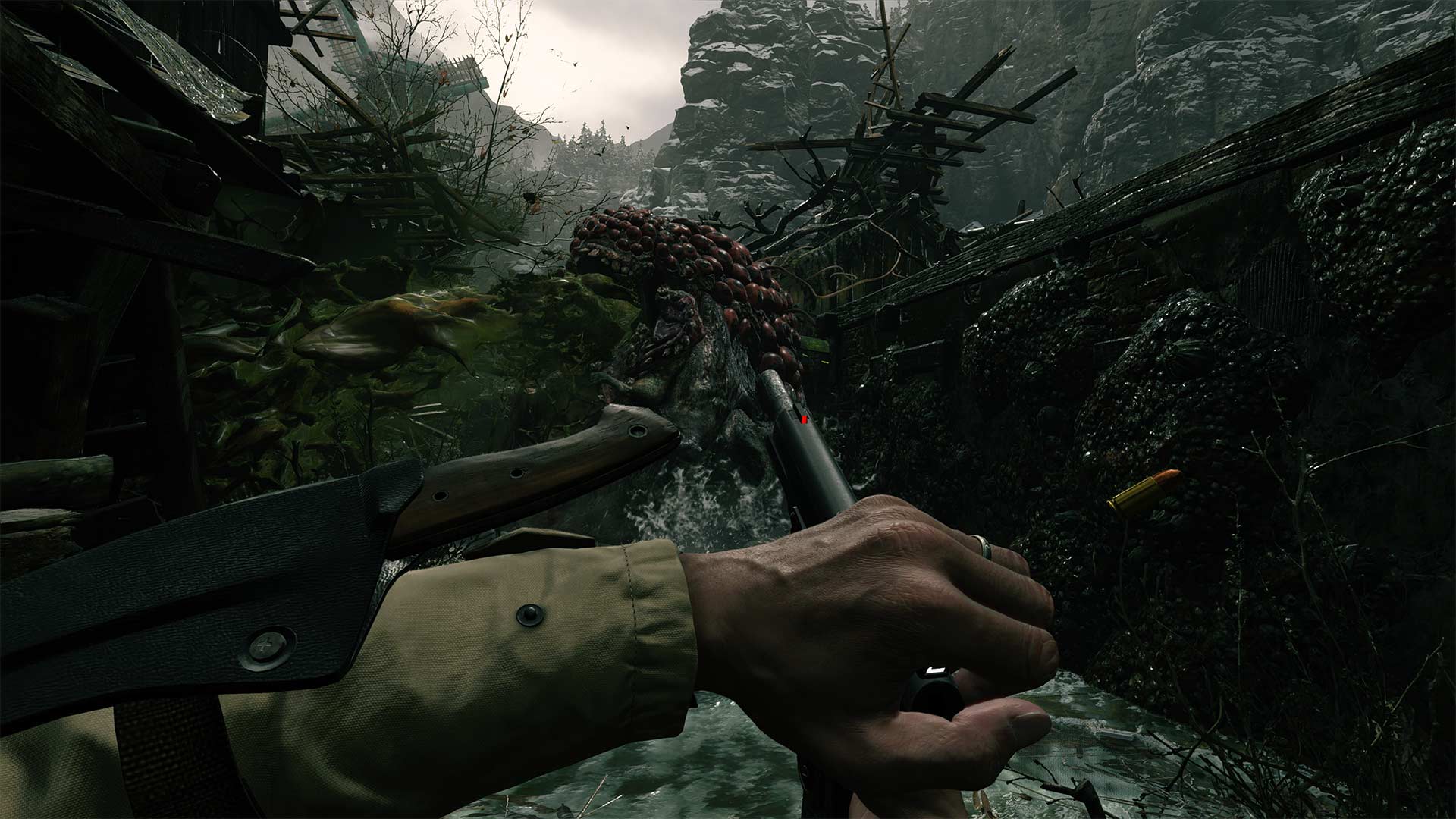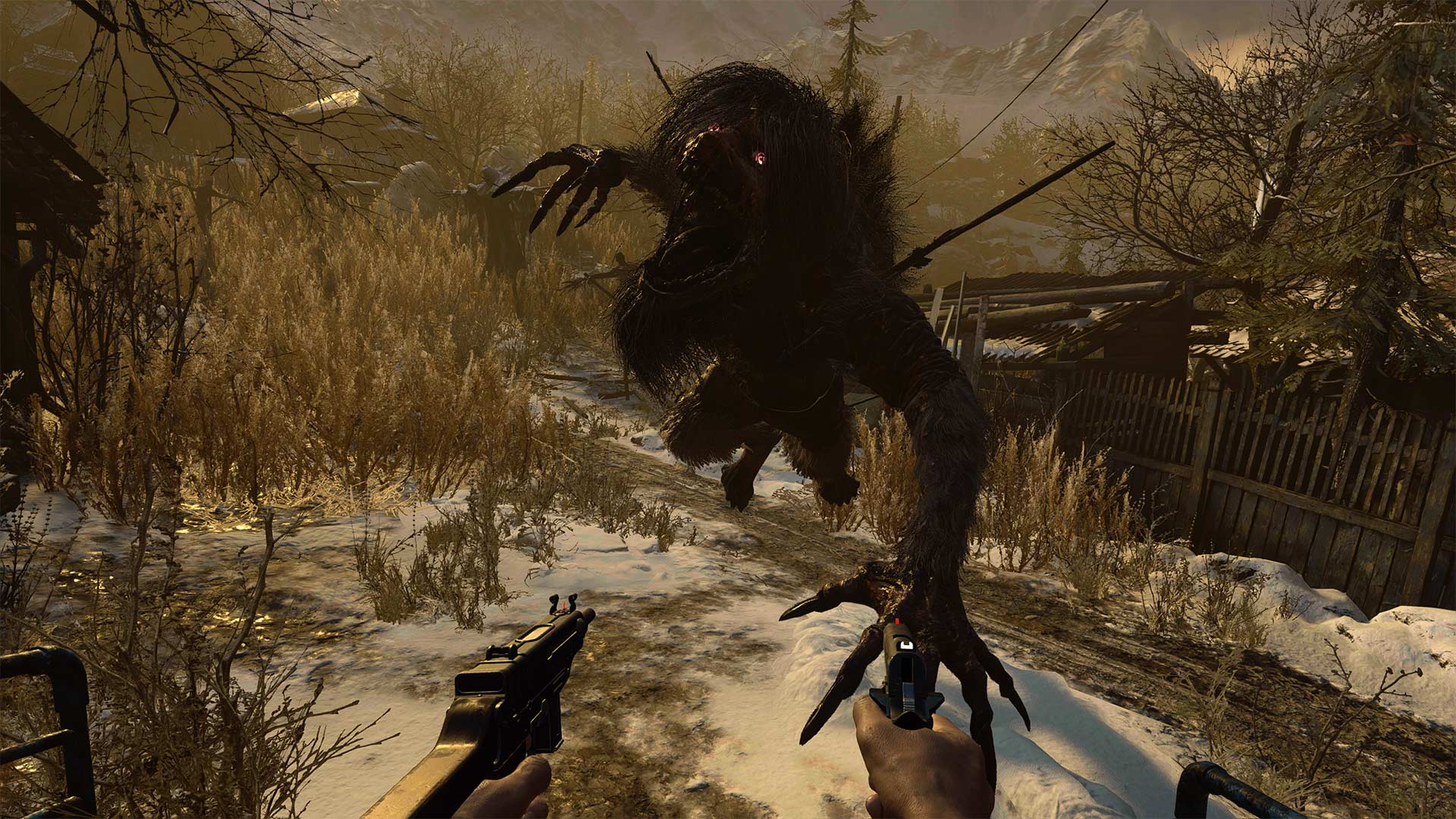When I first tried Resident Evil 7: Biohazard on PlayStation VR way back in 2017, I was blown away. Sneaking my way through the grimy, hauntingly eerie Baker estate through a headset was a level of immersion I’d not seen in a game.
Looking back, though, it was certainly imperfect. The resolution drawbacks were fairly significant, you still had to use the PS4’s DualShock 4 controller and there were some odd cut-to-black moments for certain transitions when protagonist Ethan Winters was moving, like dropping from a ladder. To be fair, it’s clear that such concessions were necessary for a first-gen VR experience, but it nonetheless makes the experience feel a tad dated in hindsight.
None of that is an issue with Resident Evil Village, the franchise’s second outing that’s fully playable in VR on PlayStation. (Sadly, Resident Evil 4 VR is an Oculus Quest 2 exclusive.) Where RE7 translated somewhat awkwardly to VR, Village feels absolutely built for it. Across the board, Capcom has smartly leveraged the PlayStation VR2‘s beefier specs and unique features to take an already great game and deliver an experience that is, hands-down, one of the best I’ve ever had on VR, even after only a couple of hours.
That starts with the visuals. On a base level, the PS VR2’s 4K HDR support already puts it well above the 1080 HDR of its predecessor. What’s more, the PS VR2 leverages eye-tracking to improve the fidelity of what you’re directly looking at by reducing image quality in your peripheral. In other words, Village is remarkably crisp in VR, with the game’s realistic character models, solid art direction and intricately designed levels all looking quite sharp. I’m also not normally someone who notices the implementation of 3D Audio (spatial sound), but I absolutely felt the difference here, adding to the immersion as all kinds of vampires, ghouls and other creatures hissed at me from the shadows.
But beyond that, the game’s cinematic presentation truly comes to life in VR. When a gruesome Lycan tackles you to the floor, snarls through its blood-soaked fangs and takes a bite out of you, it’s frighteningly up-and-close-and-personal. Running through the sadistic Heisenberg’s trap-infested catacombs feels like a thrilling rollercoaster ride thanks to the ability to freely rotate your head as you slide down a slope. And yes, seeing everyone’s favourite tall vampire, Lady Dimitrescu, tower above you is genuinely chilling. It’s one thing for Capcom to tell us she’s 9’6″ — it’s another to see that represented, to scale, in VR. Village wasn’t a terribly scary game on the whole outside of the horrifying Beneviento house, but seeing the game’s nightmarish assortment of enemies from this new perspective absolutely makes them more fearsome.
More importantly, though, VR dramatically builds upon Village‘s already satisfying gameplay mechanics. As mentioned, RE7 in VR was limited to the DualShock 4, which made the headset feel more like an add-on than the actual main event. Village, on the other hand, is playable entirely with the PS VR2’s comfortable motion-controlled Sense gamepads — a setup that offers two key benefits.
First, you can now fully interact with your surroundings by moving your arms, whether that’s reaching down to pull open a drawer, sliding a lock on a gate, or rotating an ornate tablet for a puzzle. Considering a key part of Resident Evil is scouring every nook and cranny to find precious ammo, herbs and other resources, the motion controls make otherwise basic activities feel far more engaging.
Of course, full control over Ethan’s arms extends to combat. At any time, you can swing your arms upward in a blocking position to protect against upcoming attacks or make slashing and stabbing gestures for knife attacks. Through this interactivity, Village‘s rudimentary melee combat feels genuinely engrossing, especially when you’re low on ammo and have to desperately fall back on it. Capcom has even made it so the knife will automatically return to the sheath on Ethan’s left arm should you drop it. While this may break the immersion a bit, it’s worth it so you don’t have to try fumbling around to pick it up. The same applies to the other weapons that Ethan will acquire. And on that note — first-person gunplay with the Sense controllers is an absolute blast. So much so, in fact, that it’s hard to believe I ever settled for using a controller and VR setup with RE7. That’s because it feels so intuitive. Naturally, aiming anything with motion controls will automatically feel more immersive than analogue sticks, and that’s before you factor in the differences between each gun. For example, reloading your handgun means you have to physically grab a clip from your hip, push it into the bottom of your firearm and then pull back the slide on top. Your shotgun, meanwhile, requires you to load shells one at a time and then pump the barrel between each shot.
And on that note — first-person gunplay with the Sense controllers is an absolute blast. So much so, in fact, that it’s hard to believe I ever settled for using a controller and VR setup with RE7. That’s because it feels so intuitive. Naturally, aiming anything with motion controls will automatically feel more immersive than analogue sticks, and that’s before you factor in the differences between each gun. For example, reloading your handgun means you have to physically grab a clip from your hip, push it into the bottom of your firearm and then pull back the slide on top. Your shotgun, meanwhile, requires you to load shells one at a time and then pump the barrel between each shot.
This sounds fairly simple, but when you have a group of beasts just a few feet away, this real-time, multi-step process is a real game-changer. Indeed, there’s a nail-biting tension as you pepper an enemy until he falls, only for your clip to go empty as he starts to get back up, leading you to frantically have to reload your gun, aim and fire before he lunges at you. (For this reason, I didn’t bother with managing two weapons through dual-wielding, one of the VR version’s new features, but that’s still an undeniably cool option to have.) An added benefit to all of this? It addresses two of my only issues with Village — the downplaying of horror in some sections and the game becoming too easy by the end as Ethan becomes a walking armory. When you have to fend off macabre foes who are quite literally up in your face through skin-of-your-teeth gunplay, things definitely feel scarier and more challenging. Honestly, my only gripes with Village‘s VR version are pretty minor. You have to download a separate free file on the PlayStation Store that works alongside your copy of the base game, so your previous saves unfortunately can’t be carried over. There are also some jarring moments in cutscenes where Ethan may automatically move where you’re not looking, resulting in some brief disorientation. On the whole, it’s a lot smoother and more natural than RE7, leading me to feel no motion sickness, but these (few and far in between) instances are still worth mentioning.
Honestly, my only gripes with Village‘s VR version are pretty minor. You have to download a separate free file on the PlayStation Store that works alongside your copy of the base game, so your previous saves unfortunately can’t be carried over. There are also some jarring moments in cutscenes where Ethan may automatically move where you’re not looking, resulting in some brief disorientation. On the whole, it’s a lot smoother and more natural than RE7, leading me to feel no motion sickness, but these (few and far in between) instances are still worth mentioning.
Resident Evil games have always been designed with replayability in mind, which is undeniably valuable for many, but I’ll confess that I’m generally not inclined to revisit the same campaigns for bonus weapons and other unlockables. However, Village is one that I absolutely intend to see through to the end another time on PS VR2. The heightened atmosphere, jaw-dropping sense of scope and gripping combat afforded by the headset make this a legitimately transformative version of Resident Evil Village. Outside of Horizon Call of the Mountain, this is easily the PS VR2’s killer app.
Resident Evil Village‘s VR mode is available for free to anyone who owns the standard or Gold Edition of the base game. It’s worth noting that yet-to-be-revealed PS VR2 content is also in development for the upcoming Resident Evil 4 remake.
Image credit: Capcom
